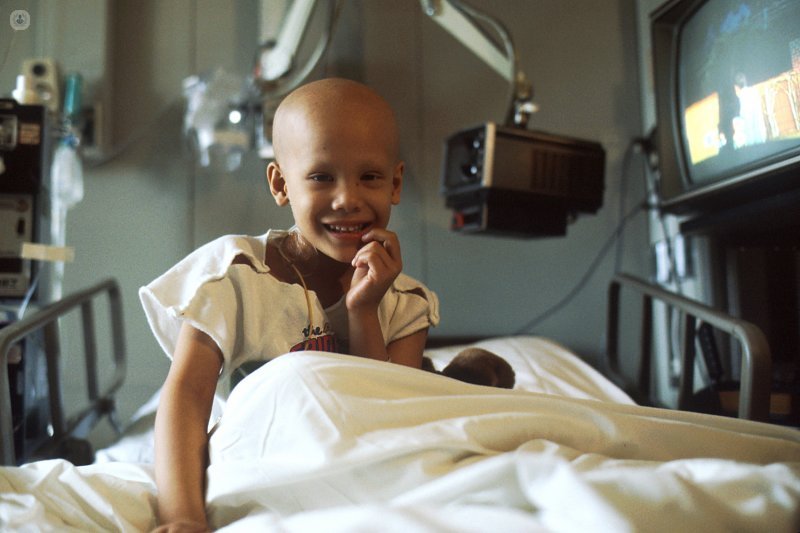Chemotherapy: a ray of hope after cancer diagnosis
Written by:Chemotherapy employs the use of medications known as cytotoxic drugs in order to kill cancerous cells, preventing their further reproduction and therefore halting the spread of cancer to elsewhere in the body. Cytotoxic means toxic to cells, so it is not just cancerous cells affected by chemotherapy, but normal and healthy cells as well. Healthy cells usually recover from any damage caused by treatment, where as cancer cells do not.

When is chemotherapy treatment used?
Chemotherapy is often used alongside other cancer treatments such as radiotherapy (chemoradiotherapy), hormonal therapy, or surgery in order to improve their effectiveness, but it can be used alone against cancers such as lymphomas and leukaemia.
Use of chemotherapy depends on the general health of the patient, the type of cancer they have, the risk of the cancer recurring, or if it has spread.
It is also common for patients to undergo chemo after surgery or radiotherapy in order to decrease the chances of the cancer coming back.
In some cases chemotherapy may be used in an attempt to cure a patient of cancer. This is known as curative chemotherapy, although the cure is sadly not always guaranteed. Sometimes, when a cure is impossible, perhaps in cases of very advanced cancers when diagnosis was made too late, chemotherapy can still help alleviate the patient’s symptoms (palliative chemotherapy).
How successful chemotherapy is as a treatment varies significantly, but a medical specialist will be able to answer any doubts or queries anybody might have.
What are chemotherapy drugs?
There are a variety of chemotherapy drugs available which are used according to the type of cancer a patient has and where in their body the cancer began. For example, the drugs used for a case of breast cancer that has spread to the lungs may be different from the drugs used to treat lung cancer on its own. Different cytotoxic drugs work for different kinds of cancer.
Chemotherapy can be administered in a number of ways. Two of the most common types are intravenous chemotherapy or oral chemotherapy.
Intravenous chemotherapy is normally carried out in a hospital, where the patient will receive the drugs via a tube inserted into a vein in their chest, hand, or arm.
Oral chemotherapy may be done at home, and requires the patient to take their chemotherapy medication in the form of tablets. Frequent check-ups at the hospital are necessary in order to ensure all is going to plan.
What are the side-effects of chemotherapy?
Despite the benefits of destroying cancer cells, the downside of chemotherapy is the unpleasant side effects it may cause. As the drugs used are toxic to all cells, they can damage cells that are non-cancerous, such as blood cells or skin cells. Chemotherapy side-effects can be very unpleasant for the patient involved.
The most common types of chemotherapy side-effects are:
- Fatigue
- Nausea and vomiting
- Loss of hair
- Susceptibility to infections due to reduced immune system
- Constipation or diarrhoea
- Itchy, dry, or painful skin
It is possible to treat or prevent side-effects, if not they subside once chemotherapy treatment is complete.


